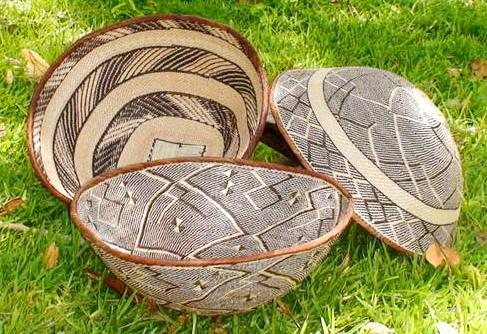By Elia Ntali
We now live in a global world in which Zimbabwe must start paying a significant attention to tracking her competitors in order to fully understand global markets and exploit opportunities.
Given that we are trying to leverage our beautiful nation in the world of arts, craft and to larger extent tourism as a place of tourist attraction, there is need to ask ourselves what it takes to build a sustainable art and craft industry.
Zimbabwe’s potential in the global market has not been overlooked by potential buyers of art and craft work, who are always online searching for Zimbabwean made crafts but has been subdued due to the non availability of links which showcase the arts and craft products.
Without any shed of doubt these links have a great impact on the promotion of tourism in the country as one may be lured to pay a courtesy call to the country for a first hand look at the products thereby enhance tourism.
Such links may be on catalogues and brochures of tourism players such as hotels, tourism ministry among other government departments.
There is no doubt others have already written long thesis about our government’s responsibility in this connection and I would not want to belabor these points.
Flexible processes such as easy and faster business registrations, taxes on importation and exportation, just to mention a few are needed to expose the country’s competitive advantages.
These turn of events should serve as a foremost opportunity for Zimbabwe. The nation needs to be pioneering and to revivify our market with all our marketable products such as baskets, sculpture we have, to flourish, be lucrative and stronger economically within the artery of globalization.
In doing so Zimbabwe is more likely to attract powerful buyers, visitors and competitors from other nations, helping the nation to accomplish the government’s blue print ZimAsset that is clusters 2 and 4 which advocates for poverty eradication and value addition respectively.
This is a prime opportunity for Zimbabwe to be innovative by rethinking our efforts to be more attractive to the international market so that together we can revitalise our local arts and craft, grow a profitable market economy, and sustain the growing needs of the country’s arts and crafts industry.
Understanding basic online marketing concepts is what every Zimbabwean i.e. the basket makers, traders and business people need.
I would recommend stakeholders such as the National Gallery of Zimbabwe, the Ministry of Tourism and a host of other interested partners to come up with ways of educating crafters on how to market their works.
Once our crafters and its populace understand these marketing concepts, we would then be more likely to gain the knowledge and skills to understand what exactly is meant by competitive advantage.
Crafters would then be able offer products and services that would satisfy target-customers and might then deliver more added value to products to our customers than our competitors for similar products.
As every business is aware listening to customers naturally leads to new business propositions, over a period of time, customer centric organisations become more accepted and known for their customer focus backed by value for money.
Finally, cultural villages are a great component in this matrix as they play a crucial role in the marketing of Zimbabwean made crafts therefore craft and art works need to be exhibited at such places.
The responsibility is not only on the arts and craft stakeholders and Governments departments but it needs to begin at home as charity begins at home.






